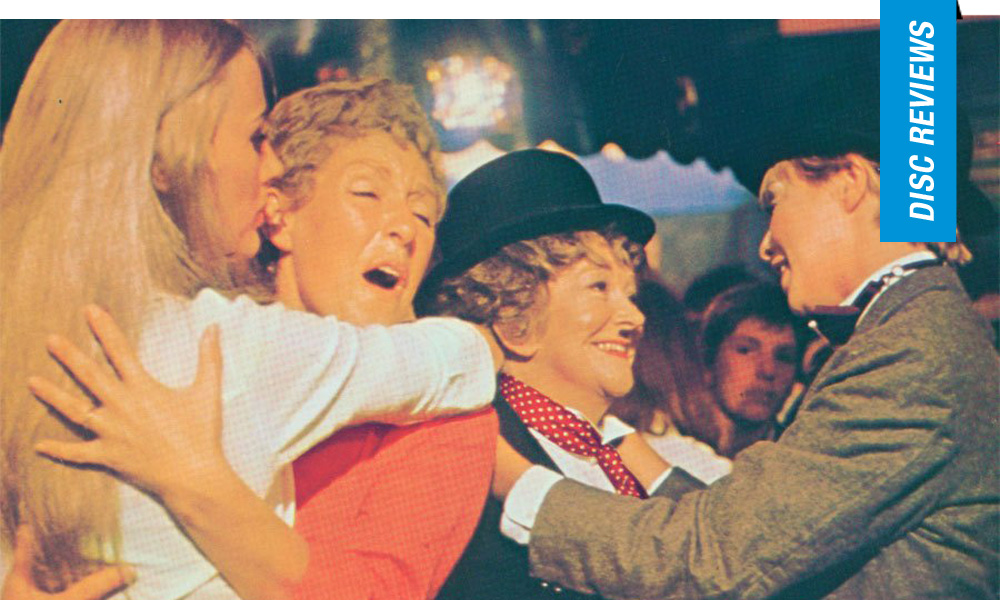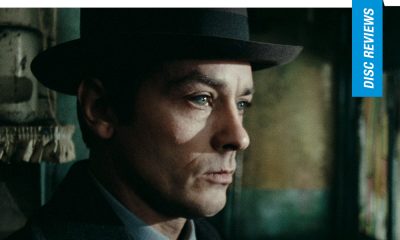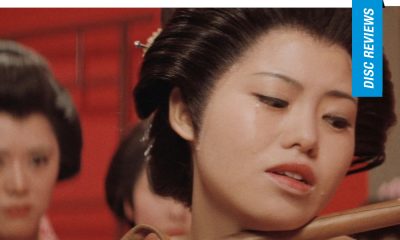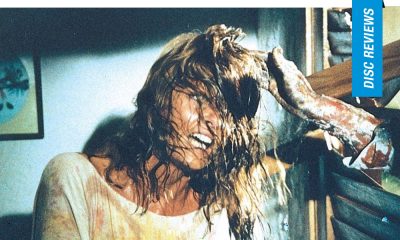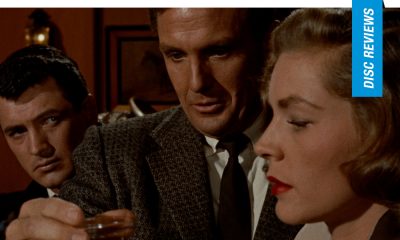Sapphic Salutations in the Salacious “The Killing of Sister George” (1968) | Blu-ray Review
Thanks to 2017’s “Feud,” it’s a prime time to examine some of the underrated gems from the filmography of Robert Aldrich, an underrated director with plenty of daring projects which unfortunately were both critical and box office failures upon release. One of the director’s most interesting periods began after his most significant success, 1967’s The Dirty Dozen, a seminal war film drama which arrived after his see-sawing between the horror-hag subgenre he jumpstarted with 1962’s Whatever Happened to Baby Jane? and continued with 1964’s Hush, Hush, Sweet Charlotte whilst returning to all-male ensembles such as The Flight of the Phoenix (1965). But after the success of Dozen, Aldrich sold his profit to open Aldrich Studios, which operated from 1968 to 1971, shuttering after his company was unable to produce a hit, starting off on a bad note with the campy The Legend of Lylah Clare, an overbaked melodrama featuring Kim Novak. However, it’s this period which resulted in some of the director’s most interesting ventures, namely the notorious lesbian classic The Killing of Sister George and 1971’s The Grissom Gang, both re-released courtesy of Kino Lorber.
Based on a 1964 play by Frank Marcus and adapted by Lukas Heller, The Killing of Sister George is a lacerating black comedy about soap opera star June Buckridge (Beryl Reid, who starred in the stage version), better known as Sister George, the popular character she plays on the hit BBC series “Applehurst.” Several deaths of other key characters begin to eat away at George, who is a ribald, outspoken lesbian and nothing like the mild, meek-mannered bicycle rider she plays on the show. Her paranoia bleeds into her troubled relationship with her much younger girlfriend Alice “Childie” (Susannah York), who depends on George for everything, working as a peripheral figure in the fashion industry as she expands her prized collection of dolls. When a joke on set sends George into a frenzy, she leaves work, gets drunk and assaults two novitiate nuns in a taxi, leading the Mother Superior to complain to the BBC. Network producer Mrs. Croft (Cora Browne) visits George at home, warning her that she must apologize if she wishes to remain on the show. At the same time, Mrs. Croft begins to take an interest in Childie, and George finds her fate may already have been sealed…
As outlined in Vito Russo’s The Celluloid Closet, the troubled pre-production (which involved a ferociously vocal Angela Lansbury upset she had even been offered the role, which eventually went to Susannah York) and reception of the film had a hand in destroying the success of The Killing of Sister George. The project had the misfortune of beginning production under the old Code system, requiring the title obtain a seal of approval, and completing production under the inception of the new rating system. Ere goes, the title received the dreaded X rating due to subject matter alone, though Aldrich’s inclusion of blatant homosexuality in a predatory seduction sequence between York and Coral Browne (which was not part of the original play) also had a hand in the film’s being dismissed as ‘tawdry.’
Nevertheless, The Killing of Sister George, dated as it may be, was a film ahead of its time. It remains one of the only mainstream cinematic offerings to show an actual London lesbian bar (which included many real patrons as extras, a well-meant detail which resulted in women being fired from their occupations when set photographs were published) and, thematically, tackles the vicious cultural expectation of how LGBTQ people were forced to remain in the closet, assimilate into expected gender norms or be doomed to invisibility (the literal death of Reid’s George). As Russo also points out, Reid’s George is the only multifaceted character on hand, an unrepentant lesbian who seems uninterested in kowtowing to the masses. York’s Childie is also an interesting subtext both as a character and a performer (York would star in a filmed version of Jean Genet’s The Maids opposite Glenda Jackson in 1975), doomed to be an objectified trophy wife passed along amongst the vanquishers.
Disc Review:
Kino Lorber presents The Killing of Sister George as a brand-new HD Master from a 4K scan of the original camera negative in 1.85:1. Picture and sound quality are serviceable, with DP Joseph Biroc tending to focus on a myriad of interiors, catching some unique elements of late 1960s London. There are two audio commentary tracks (film historian Kat Ellinger and film historian David Del Valle alongside actor/filmmaker Michael Varrati) while the release also features an interview with lighting/camera operator Brian West.
Brian West:
Brian West, who was the lighting/camera operator on The Killing of Sister George and the uncredited UK cinematographer, relates his experiences working with Robert Aldrich (who he describes as a charming man) in this five-minute interview.
Film Review: ★★★½/☆☆☆☆☆
Disc Review: ★★★/☆☆☆☆☆



